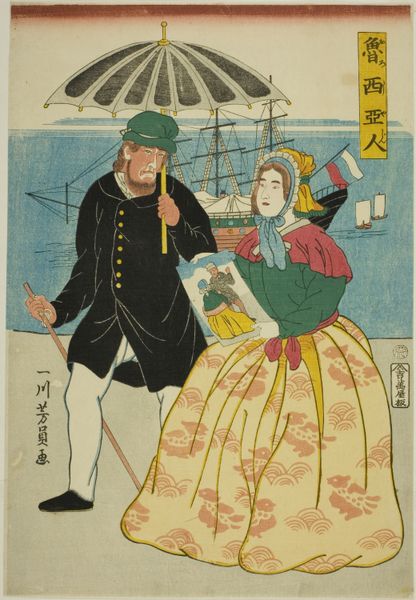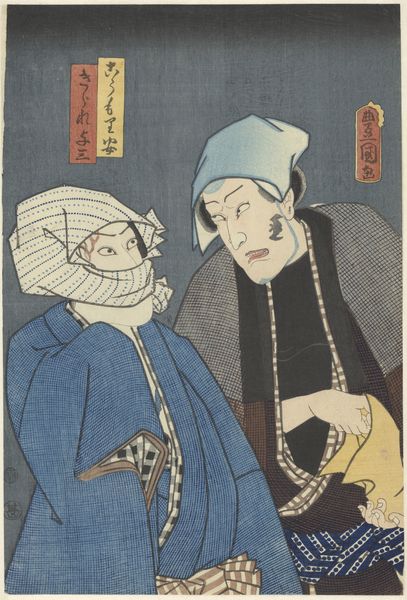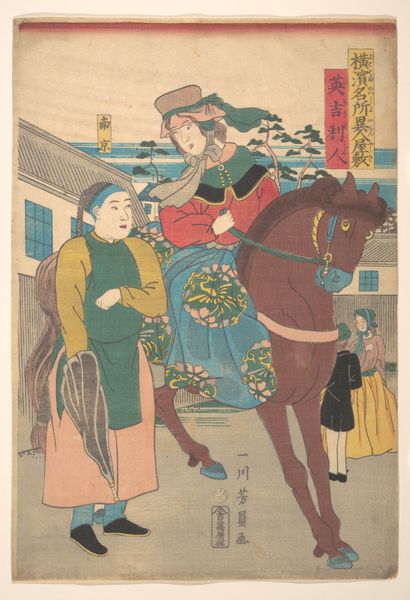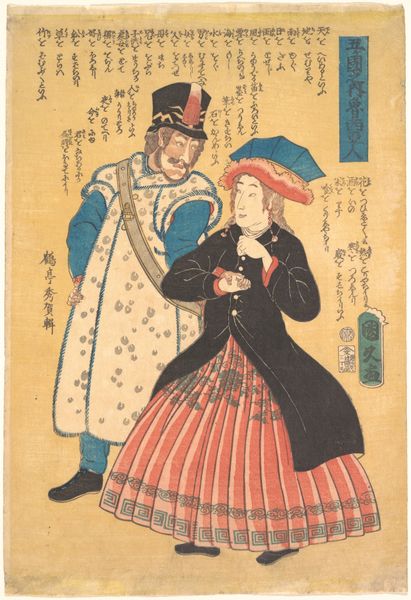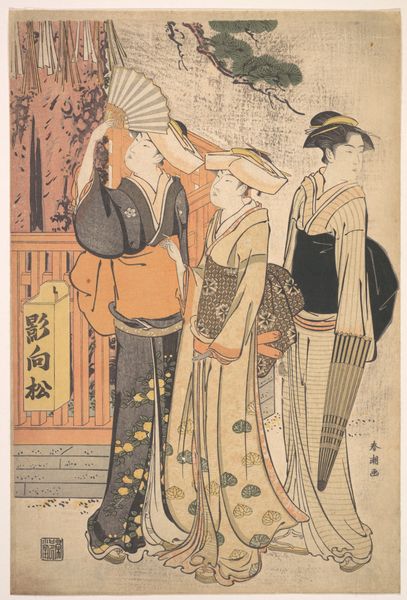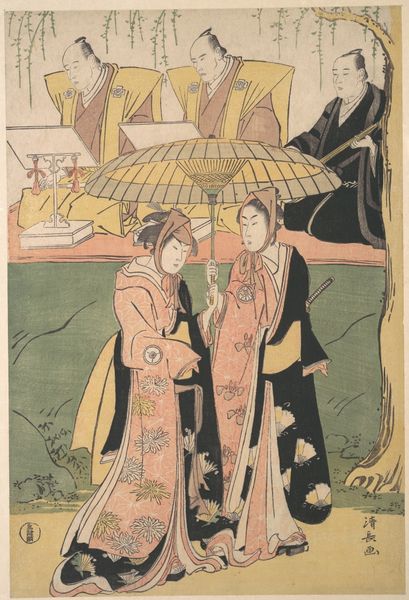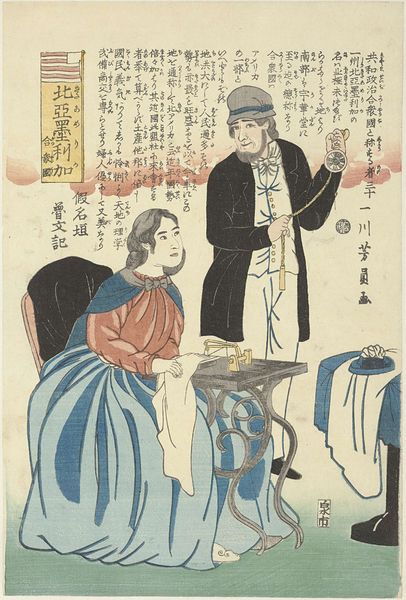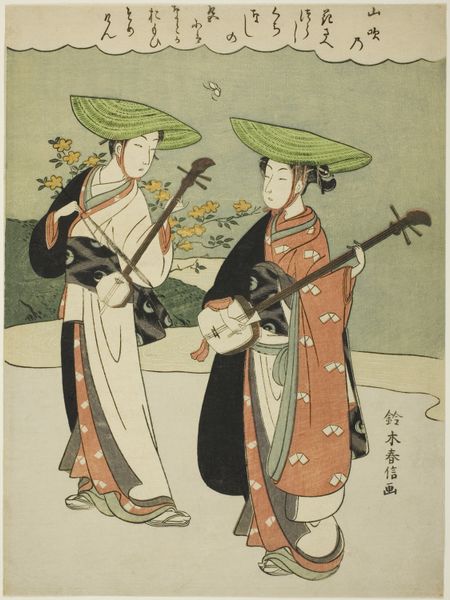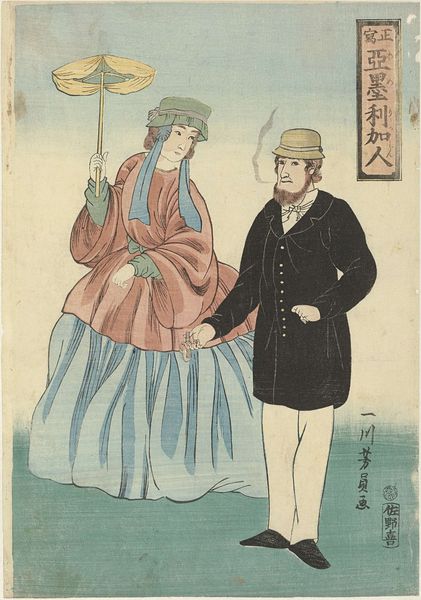
print, woodblock-print
#
portrait
# print
#
asian-art
#
ukiyo-e
#
woodblock-print
#
genre-painting
Dimensions: height 374 mm, width 248 mm
Copyright: Rijks Museum: Open Domain
Editor: This woodblock print, titled "Nederlander en een Chinees" created in 1861 by Utagawa Yoshikazu, presents a rather peculiar pairing. It has a documentary feel, but also feels heavily mediated. What are your thoughts on how to interpret this work? Curator: This print offers us a powerful glimpse into 19th-century Japanese perceptions of cultural exchange and, perhaps more significantly, the imbalances inherent in those interactions. What do you notice about how each figure is presented? Consider pose, dress, and gaze. Editor: The Dutchman seems very formally dressed, while the Chinese man seems…almost like he's in servant's clothes. The Dutchman also appears contemplative, but the Chinese man is looking to the side and holds an empty bottle. Curator: Exactly. Yoshikazu is placing these figures within a power dynamic already centuries in the making. The Dutchman’s clothing symbolizes European dominance and the pursuit of trade relations, in which the Qing dynasty’s sovereignty was under pressure during this period and the subsequent Opium Wars. What statement do you think the artist is making with the Dutch flag waving in the background? Editor: It’s a subtle brag? Or maybe, with the Chinese man's downward gaze, a recognition of a shift in power? Curator: Precisely. Think of the tradition of Ukiyo-e, reflecting current trends and tastes, catering to the elite merchant classes in Japan, but from an outsider’s view. This print seems less interested in simply documenting, and more engaged in critiquing the nascent dynamics of globalization. What is your final conclusion? Editor: I see it now: the print seems to act as a reminder of cultural negotiation. The Chinese man acts like a clear-cut allegory of the socio-political situation and the changes this implied.
Comments
No comments
Be the first to comment and join the conversation on the ultimate creative platform.
